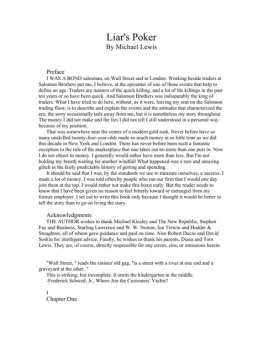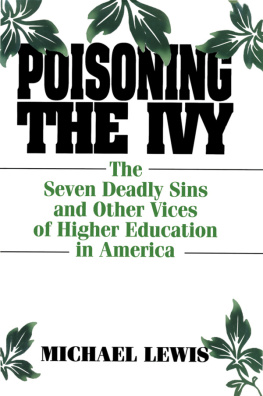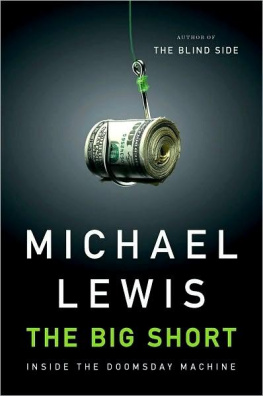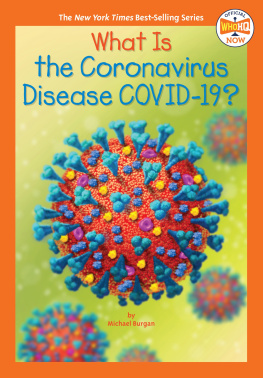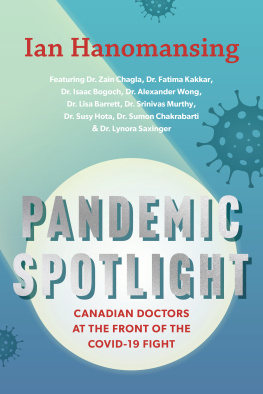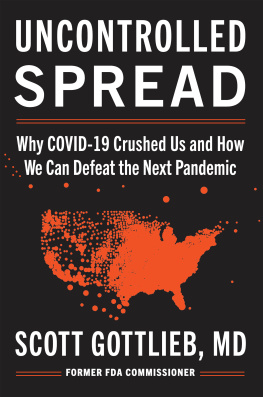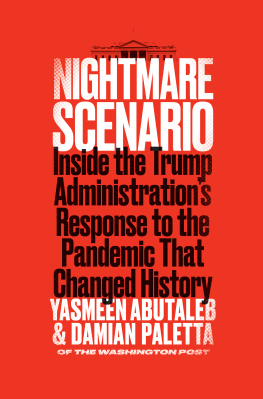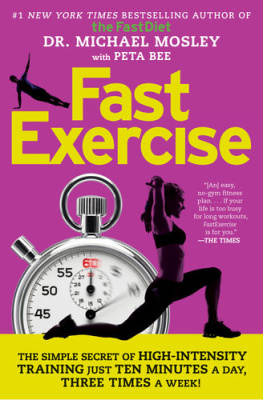
MICHAEL
LEWIS
THE
PREMONITION
A PANDEMIC STORY

W.W. NORTON & COMPANY
Independent Publishers Since 1923
To my parents, Diana Monroe Lewis and J. Thomas Lewis.
Thank you for surviving this.
Every surgeon carries within himself a small cemetery, where from time to time he goes to praya place of bitterness and regret, where he must look for an explanation for his failures.
REN LERICHE,
The Philosophy of Surgery, 1951
I t took her longer than it should have to find the grave. Except for the names on the stones, the plots were identical. In every direction stretched the dead, side by side, in long rows, like houses in a new development. Eight thousand or more precisely drawn rectangles, each marked by the same flat granite headstone, perfectly preserved by the California desert. Delius Oscar Johnson, 18661959, obviously had been here for some time, but his final resting place still looked brand-new. It was indistinguishable from the rectangles freshly carved at the edge of the graveyard for sale to the future dead.
Something was coming. Something bigger. Charity Dean did not know if the next pathogen would leap from an animal or a laboratoryshe didnt actually know anything. She just sensed it, the way shed sensed that Mrs. Lorenzen, her second-grade teacher in Junction City, whom she adored, was pregnant before shed told anyoneand completely panicked the woman by blurting it out in class. Oh no Im not! her teacher had exclaimed, leaving Charity feeling hurt and confused until, a few days later, the woman pulled her aside and asked, How did you know? It had always been part of the story Charity told herself about herself: that she knew things before she knew why. That she had a nose for things about to change. And for risk.
A year into the pandemic, she thought of COVID as Mother Natures gift to the country. The hardest part, to a public-health officer trying to control a communicable disease, was that you were always looking in the rearview mirror. COVID had given the country a glimpse of what Charity had always thought might be cominga pathogen that might move through the population with the help of asymptomatic spreaders, and which had a talent for floating on air. Airborne and Asymptomatic. Now that we knew how badly we responded to such a threat, we could begin to prepare for it. Mother Nature has given us a fighting chance, she said. Shes tipped the odds in our favor.
The graveyard was empty. The February sun was setting behind the desert mountains and a new chill was in the air. She picked up the pace and walked up and down the long rows in search of what shed come for.
Even before shed quit her job shed had that odd thought, that the country didnt have the institutions that it needed to survive. In particular, it did not have what it needed to battle a pathogen. The pandemic had given Americas enemies a clear view of the countrys weakness: its inability to respond to a COVID-like threat. On her calls with the Wolverines, shed ask: What does the country need? She was really asking herself, as no one had the answer. Her conclusion had pained her some. Once shed become a public-health officer, shed imagined an entire career in public service. Now she did not believe that the American government, at this moment in its history, would ever do what needed doing. Disease prevention was a public good, but the public wasnt going to provide anything like enough of it. From the point of view of American culture, the trouble with disease prevention was that there was no money in it. She needed to find a way to make it pay.
The problem was a crazy problem. It wasnt going to have a non-crazy solution. Still, shed sort of shocked herself. Shed never had the slightest interest in business. But if she wanted to save the country, shed need to become an entrepreneur, and create a companythough in business, she quickly learned, she couldnt talk like that. When she said she wanted to build a tool to save the country, people just smiled and thought she was goofy in the head. But when she said things like Im going to create a data-based tool for disease prevention that companies can use to secure their supply chains, serious business types nodded. Five smart people have replied with confusion when I said the company was to save the world and protect our country, said Charity, after her first attempts to explain her vague idea. Then when I said, Were going to do private government operations, like Blackwater, their eyes lit up and they said, Oh wow, you could take over the world.
Shed entered the private sector with the bizarre ambition to use it to create an institution that might be used by the public sector. Shed already hired twenty people, among them public-health nurses and some of the team at the Chan Zuckerberg Biohub responsible for genomic sequencing, including Josh Batson and David Dynerman. Joe DeRisi had signed on as an adviser; Carter Mecher was about to. Shed raised millions of dollars in capital. Venrock, a leading health care venture capitalist, had taken a stake in the new company. As a local health officer, she hadnt been able to get the tens of thousands of dollars she needed for some new disease-stopping machine. In the private sector, people would throw tens of millions at an idea: if she failed, it wouldnt be because investors wouldnt give her the money to try. The Public Health Company, shed called it.
It was still unclear what The Public Health Company might become. The person with the most curious view of the possible future was Todd Park, the former White House chief technology officer. After hed seen Charity in action in Sacramento, Park had told her hed help her with whatever she wanted to do. Hed created three separate billion-dollar health care companies himself, and in each case his idea was to find the person who was the very best in the world at a given task and, effectively, turn them into software. For example, in 2004, hed found a woman named Sue Henderson, who, for reasons no one could understand, was the single best person in the country at getting insurance companies to pay doctors bills. The country had hundreds of health insurance companies, each with its own rules, which theyd change capriciously. Sue Henderson somehow knew them all, along with the language that got them to pay a bill. Todds brother, Ed, had sat in a room with her and coded her reaction to various situations. It had taken them five years to finish the job. By the time they were done, the company, athenahealth, had become the countrys leading medical biller because thousands of doctors used Sue Henderson to deal with insurance companies.
Todd Park thought that The Public Health Company might do the same kind of thing, by turning Charity into the local public-health officer for everyone who needed onea group that suddenly included just about every big corporation.
At length Charity found the grave shed come for. Jerald Scott Jones. May 23, 1958December 8, 2015. Hed been found dead on a Santa Barbara street corner at the age of fifty-seven. The official cause of death made for a long list, but what its items had in common was neglect. When he died, the United States had just entered a three-year period during which the life expectancy of its citizens had fallen every yearthe first such stretch since the First World War and the 1918 pandemic. And so Jerry was, in his way, a representative case.
Hed first turned up in the emergency room at Cottage Hospital when Charity was a resident. Shed treated him for years, first in the ER and then on the trauma floor, then in the ICU and, after shed become the health officer, in the basement at the Santa Barbara county clinic. Shed finally treated him on a street corner, after he refused to visit the room she worked in at the homeless shelter. Too many drugs there, hed said. I dont do drugs. Im an alcoholic. Shed thought,
Next page


